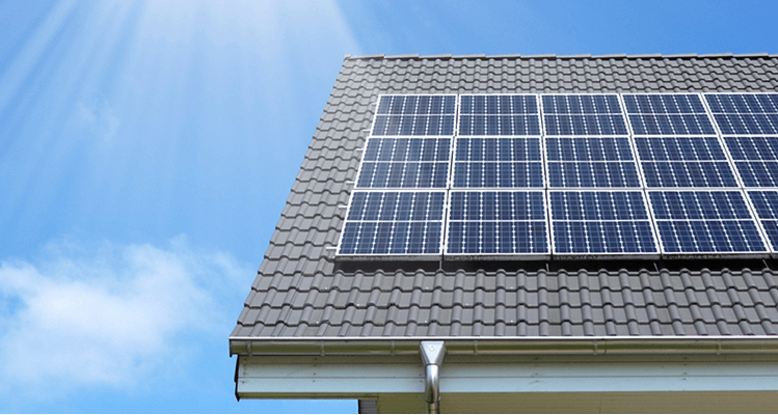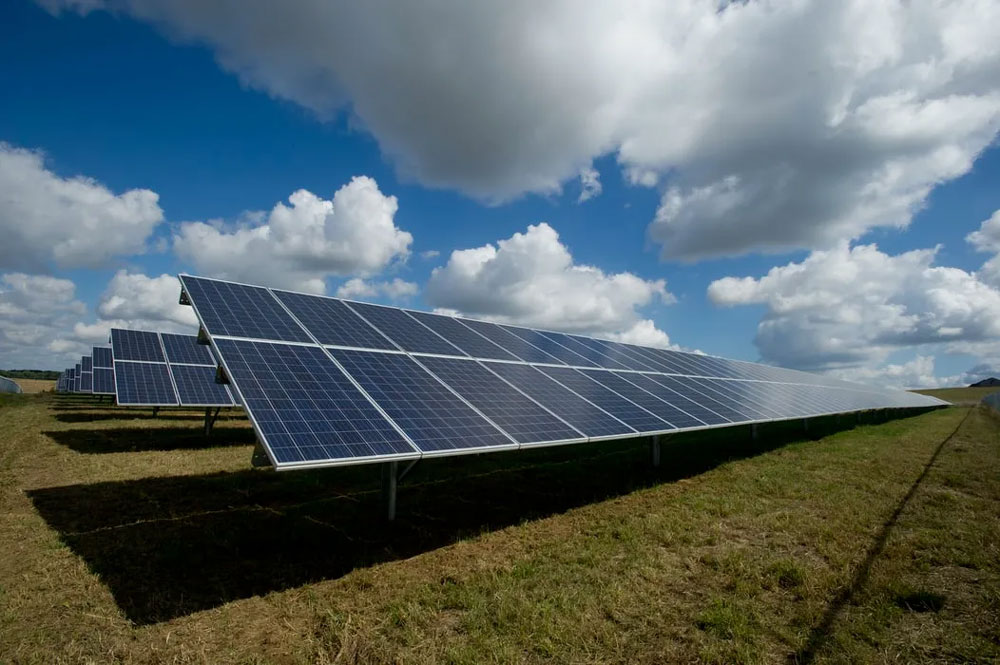Mono PERC (Passivated Emitter and Rear Cell) is a high-efficiency solar cell technology that reduces energy loss through a rear passivation layer, improving photoelectric conversion efficiency. It is widely used in photovoltaic power generation and has significant economic and environmental advantages.
Mono PERC Solar Overview
Mono PERC (Passivated Emitter-and-Rear Cell) solar cells have benefitted from a feature that allows their specific cells to be enhanced through efficiency boosts with a specially developed rear passivation layer.
Compared to the older conventional crystalline silicon cell technologies, PERC technology records higher energy conversion efficiency by curtailing rates of electron recombination, increasing reflectivity of incoming light, and changing the internal structure of the cell significantly, making it one of the widely used high-efficiency solar cells in the present-day market.
The rear passivation layer is the essence of PERC technology. Its functionality drastically reduces the losses incurred by photogenerated carriers, focusing on reserving as much energy to increase output current. In addition, these cells have proved to be high-performing low irradiation or weak light-response-oriented devices, perfectly delivering more stable power output at very early hours of the morning and later in the evening. Thus, mono-crystalline material, together with its high purity and uniformity, unleashes additional performance potential through its use with PERC.
Mono PERC represents the new generation of solar cell technology today. Residential consumers, businesses, and industries mostly utilize it in solar systems these days. The demonstrations, these slabs make the photovoltaic industry quest for high energy conversion efficiency. Although they do have relatively higher production costs and technical complexity, they return their cost several times over through their excellent performance indicators.
Advantages of Mono PERC
Mono PERC cells can be said to convert energy very well, and so they are able to produce more electricity for the same area. This becomes even more practical when there is limited space for installation, such as on rooftops, because maximum utilization can be done with spaces that are otherwise not being used.
Moreover, the serious development on PERC technology reduces performance degradation significantly under high-temperature conditions, increasing the real-time value of the product.
The other big strength is that they give very good performance under low light conditions. Using the reflection of the rear passivation layer and superior carrier capture capability, Mono PERC cells generate power even without sufficient light by keeping a much higher percentage of generated power efficiency. That is why it can also use different weather conditions, especially in the presence of clouds or with low sunlight in the mornings and evenings.
However, Mono PERC cells have long lifetimes. Because of their optimized structural design and the use of raw materials with the highest possible quality, PERC cells exhibit very low degradation in performance after long periods of time. Higher returns for the users are achieved via better lifecycle performance of the complete system. Moreover, high efficiency means improved resource utilization and lower carbon footprint, which makes this technology even more attractive.
Applications in the Energy Sector
Mono PERC cells are versatile in many aspects of energy use. Mega solar power plants, distributed generating sources, and stand-alone microgrids make up the entire range where energy conversion is made effective by Mono PERC cells. These cells efficiently convert sunlight into energy and will attract a lot of interest from PV power plants since they can raise power generation efficiency and reduce unit costs through high efficiency and good performance.
For example, Mono PERC cells would be used in household installations, such as rooftop solar systems. Their features of efficiency and durability are such that users get a sustainable supply of "green" electricity at lower costs over the long term. Furthermore, their more consistent and aesthetically pleasing appearance earns jibes from many customers looking at a blend of going green with aesthetics.
It is the commercial application of the particular technology that brings further developments to Mono PERC. The commercial building has a larger roof area, which can accommodate a more extensive solar panel array. Companies should also achieve cost reduction in energy consumption once they use Mono PERC technology; they will further add to their market recognition and social responsibility value with green electricity.
Lone PERC cells are also a great option for areas away from the grid or off-grid applications, since with energy storage technology, they form very effective autonomous power systems that guarantee a constant and reliable source of energy to areas that do not have grid coverage.
Manufacturing Process Insights
The Mono PERC cells have a complex manufacturing process compared to conventional solar cells. This production process comprises the following major stages: production of mono-crystalline silicon wafers, cell processing, and assembly of modules.
The production phase of mono-crystalline silicon wafers involves the high-purity Czochralski growing method, after which it goes into the slicing of the ingots into extremely thin wafers. Mono-crystalline wafers yield better electron mobility and have fewer defects than polycrystalline ones.
The cell processing primarily involves the rear passivation layer creation, an important process in PERC technology. In most cases, this passivation layer is formed on the niobium layer through an aluminum oxide layer, and then more protection from the silicon nitride layer, with the purpose of being embedded in the junction to make it improve reflectivity. A pyramid-like texture is then used to etch the wafer's surface, which increases light absorption efficiency.
Finally, the processed solar cells would be combined in series and encapsulated into a module for module assembly. This final stage comes with high-tech encapsulation technologies that would make the module stronger in terms of weather and mechanical resistance and would focus more on its long-term stable operation under different environmental conditions.
Performance Comparison
Mono PERC cells offer obvious advantages regarding comparison with standard polycrystalline cells like efficiency, longevity, and low-light performance.
In general, Mono PERC cells provide a photoelectric conversion efficiency that is 2%-3% higher than polycrystalline cells, making for extra electricity from the same unit area. It is suitable under scenarios requiring efficient space utilization, like urban rooftops for solar systems.
Mono PERC cells are very good in high-temperature conditions when compared to polycrystalline cells. Conventional cells suffer a drop in performance during high-temperature environments, whereas PERC technology does not allow much degradation, and so is much better in hot areas. The output power of such cells under low radiation conditions is significantly higher than that of normal cells, which is vital for areas that have a cloudy weather pattern most times.
Market Trends and Demand
It is noted that the demand for Mono PERC cells in the market has increased considerably due to the growing global interest in renewable energy.
Technically, the cost of manufacturing such cells is gradually coming down owing to the production scale expansion in the industry and technological advancements in PV in recent years, thereby further boosting market penetration of the same.
At the policy level, induction of such incentives for renewable energy and in other countries has paved the path for promotion of Mono PERC technology. The factors above have played a defining role in promoting awareness among businesses and consumers regarding environmental protection and sustainability, so that they can switch to high-efficiency Mono PERC cells.
Cost Efficiency Analysis
Mono PERC cells require a higher initial investment, but they pay off very well over their entire life cycle in terms of cost-efficiency.
First of all, because of their higher performance, Mono PERC cells produce significantly more power per unit area and thus drive down cost per kWh. This is critical for rooftops or projects with limited areas.
Mono PERC cells have slower performance degradation, producing much steadier output over their service life. It lowers the long-term operational costs and improves economic performance at a system level. The cells also have excellent performance in low light and at high temperatures, thus allowing owners to realize more value in actual power generation.
The most interesting aspect of Mono PERC cells is the cost economy for commercial and industrial projects. High-efficiency cells also lead to reduced size of the overall system and hence reduce mounting structures, wiring, and installation costs. And this kind of saving makes Mono PERC cells of interest to investors, even with an initial high investment.





